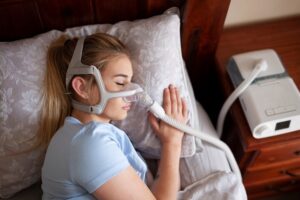Ways to Treat Andropause in Men

Andropause in men is often accompanied by low libido, erectile dysfunction, and decreased sexual desire. These symptoms lead men to lose their confidence and are a risk factor for mental disorders. Since the symptoms of male menopause are non-specific and progress gradually, they can often go undiagnosed.
The only way to properly diagnose male menopause is to test hormone levels. Using specific questionnaires, your doctor can test the bioavailable and total testosterone in your system.
Hormone replacement therapy
Hormone replacement therapy for men by andropause treatment Portsmouth NH is a great option for men who are experiencing the signs of andropause. Although this therapy is not a cure for andropause, it can be an effective way to relieve symptoms. This article outlines the benefits and risks of hormone therapy for men and discusses the options available.
Many men experience a gradual decrease in testosterone production. This can start as early as their 30s and last into their 70s. While testosterone levels will decline, men may still experience symptoms.
Hormone replacement therapy pellet placement technique
Pellets are a unique method for delivering testosterone to the body. They are designed to mimic the way that the body naturally delivers the hormone. Pellets are inserted under the skin in a small, painless procedure. The procedure only takes a few minutes, and the hormones are delivered directly into the blood stream when the body needs them. A doctor will place pellets using local anesthesia.
Pellets are made by a licensed compounding pharmacist, and the healthcare professional will determine the exact dosage and delivery method for the patient. Pellets are typically inserted under the skin in small doses, allowing them to correct the hormone levels of men experiencing andropause.
A doctor may inject hormone pellets into the body once or twice a day through a small incision. After this procedure, the doctor will tape the incision closed. Men should not engage in vigorous physical activity for about four to five days following the procedure.
Medications used to treat testosterone deficiency
There are several types of medications that are used to treat testosterone deficiency in males. These include injections and oral therapies. Injections are usually administered weekly, every two weeks, or monthly. Oral treatments include oral capsules or tablets that are placed in the cheek. These medications absorb testosterone into the bloodstream. Pellets are also used in the treatment of testosterone deficiency in men.
One of the most commonly prescribed medications for testosterone deficiency in men is clomiphene citrate, or SERM. This drug has been used for many years to improve men’s testosterone levels and increase spermatogenesis. It is taken orally and is administered in dosages of 25 to 50 mg every other day, depending on response. A study by Moskovic et al. revealed that nearly eighty percent of the men treated with this drug achieved normal testosterone levels.
Other treatment options
Menopause is a natural process and is associated with a number of symptoms. These symptoms are different for every man. Some men will have no symptoms at all while others may suffer from several of these symptoms. Low hormone levels in men can also increase their risk for other health problems such as osteoporosis and heart disease. However, these symptoms should not be ignored.
The decline in testosterone levels associated with male menopause is a gradual process that occurs over several decades. It may be triggered by psychological stress, alcohol consumption, injuries, surgeries, infections, and obesity. And while this decline is common for all men, many men do not experience these symptoms until they reach the age of 50. If this happens to you, it’s important to seek medical attention.
Article source: andropause treatment Portsmouth NH




